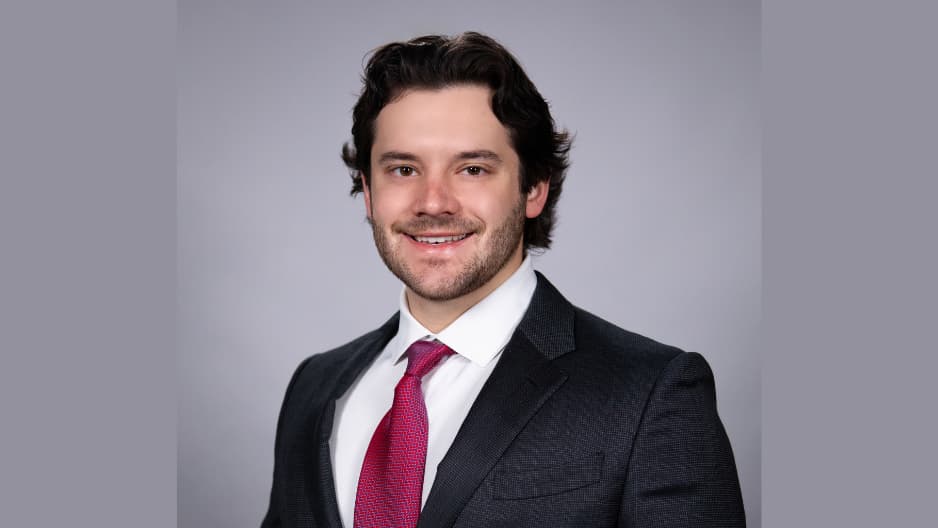When Max Horowitz, a third-year medical student at the Lewis Katz School of Medicine (Katz), began observing orthopedic trauma cases during his first year, one clinical challenge sparked his curiosity: how do surgeons disinfect external fixators when patients must return to the operating room with the device still in place?
That question laid the groundwork for a student-led research project that culminated in a podium presentation at the American Academy of Orthopaedic Surgeons (AAOS) Annual Meeting in San Diego—a rare national stage for a student researcher.
Horowitz’s project, Evaluating the Efficacy of Disinfecting Agents on External Fixator Devices, explored how to clean these devices effectively between procedures to reduce the risk of infection. His work was selected for the Poster Tour, one of the meeting’s most visible honors. “It was both exciting and an honor,” Horowitz said. “I received a lot of feedback on how to construct a follow-up study and had valuable discussions about ongoing global advancements in orthopedics.”
The idea emerged while he was shadowing Saqib Rehman, MD, Professor and Vice-Chair, Orthopaedic Surgery & Sports Medicine and Medical Director, Physician Assistant Program, on the orthopedic trauma service. Horowitz noticed that patients with external fixators often returned to the OR with those devices still in place. The clinical implications sparked a research question: can these fixators be adequately disinfected between surgeries?
With encouragement from Dr. Rehman, Horowitz began designing a study. “I helped give Max some clinical context regarding the importance of the research question,” Rehman said. “He is just extremely responsible and hard-working. Setbacks were only small speed bumps for him.”
To conduct the study, Horowitz partnered with Çagla Tükel, PhD, Director of the Center for Microbiology and Immunology (CMI), Director of the Microbiome and Human Disease Initiative, Professor of Microbiology, Immunology and Inflammation. She welcomed the collaboration, which brought together a clinical question and basic science methodology. “Max took the initiative to bring a complex clinical question into a basic science setting, which was both ambitious and forward-thinking,” she said. “His project was the catalyst for a productive new collaboration between myself and Dr. Rehman.”
The fixator devices presented a logistical challenge due to their size, but Horowitz adapted by scaling down to the most contamination-prone areas based on past studies. He built a lab model that preserved clinical relevance while allowing for reproducible data collection in a smaller space.
Horowitz said the project was a true “bench to bedside” experience that deepened his appreciation for collaborative research. “The mentorship offered by Dr. Tükel and the rest of her lab was invaluable,” he said. “Serving as a leader on this project gave me perspective on the importance of collaboration amongst various disciplines.”
Dr. Tükel noted that Horowitz went beyond just the research itself. “He wasn’t content with just completing the research; he wanted to share it with the broader community,” she said. “He independently prepared abstracts, applied to national conferences, and presented his work to expert audiences. That level of follow-through is rare.”
Dr. Rehman added, “This is a great example of how LKSOM students are going beyond the books and the exams to address real clinical problems by leveraging resources ‘on both sides of Broad Street.’ It is a testament to Max's determination and grit, but also to how busy clinicians and basic scientists can work together to address clinical problems.”
The experience helped Horowitz refine his long-term goals and strengthen his interest in academic orthopedics. “This project opened my eyes to not only the importance of incorporating basic science studies into the clinical practice of medicine but also the importance of interdisciplinary collaboration between departments,” he said.
For Dr. Tükel, Horowitz exemplifies the kind of student-led initiative that strengthens both science and medicine. “Max’s work ethic, curiosity, and drive set a standard that other medical students can truly aspire to,” she said. “He’s a strong example of what’s possible when a medical student commits fully to bridging clinical insight with scientific investigation.”

